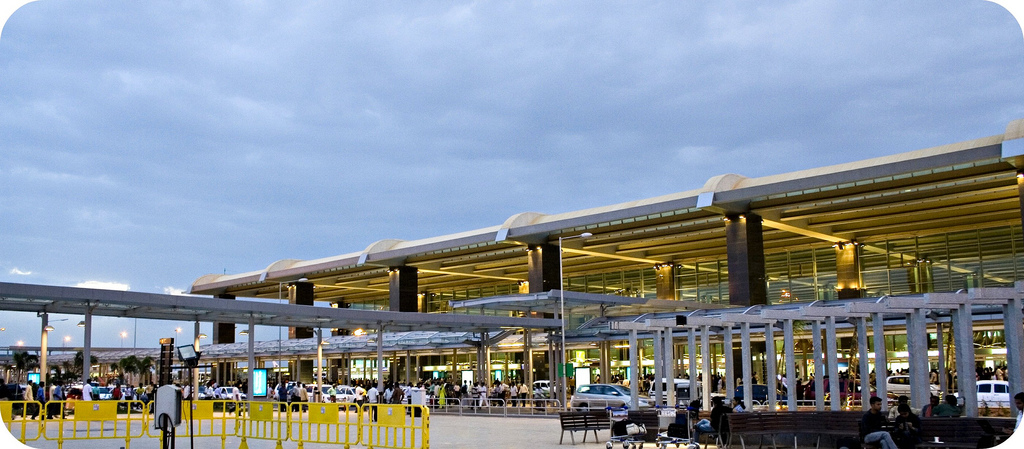
The festival season is also a time when many music and dance festivals take place. Last weekend I went to Pune to attend the Sawai Gandharva music festival. Given the current security climate, I had wondered if the festival would suffer the same fate as the Bangalore Habba, but luckily it did take place as planned but not without some security arrangements in place.
This annual festival was started 56 years ago by renowned classical singer Bhimsen Joshi who was honoured recently with the Bharat Ratna, India’s highest civilian award. The programme is a who’s who of the Indian classical music world, featuring some of the most celebrated musicians of Hindustani (North Indian) music as well as notable young up-and-coming artists and some established musicians of the South Indian style of Carnatic music.
What surprised and impressed me most about this festival was the sheer size and enthusiasm of the audience. Every year, 15,000 people attend! It takes place outdoors under a huge tent and runs for four days. The music used to go on all through the night but this changed when the city authorities imposed restrictions on noise after 11pm.

I missed the opening day, arriving only on the second day of the festival. When I enquired about seats, I was told that the chair seating and more cushy (and expensive) sofa seating were already sold out. The only available option (also the least expensive) was ‘Bharatiya Baithak’ which was translated for me as ‘Indian seating arrangement’, in other words: seats on the floor! At first the thought of sitting for 5 to 6 hours on the ground didn’t seem like the most comfortable option – but I quickly found out this is where the true spirit of the festival lives. It was like taking part in a huge picnic! A vast area in front of the stage was corralled off for the floor seating. Though I had arrived an hour before the concert was to start, three quarters of the space reserved for ‘Bharatiya Baithak’ was already taken, covered with a hodgepodge collection of colourful blankets, rugs and bed sheets, where the young and old were reading, sleeping, drinking chai, sharing snacks and chatting, patiently waiting for the show to begin.
The music started at 4pm sharp. The crowd of spectators now stretched to the back of the tent. At first there was enough space to stretch my legs but as the concert progressed, more and more people managed to squeeze in and join the crowd already seated on the floor. In India, there’s always room for one more and progressively there was less and less space until each person’s knees were touching those of the person next to them! Little boys stepped gingerly through the crowd selling paper cones of roasted peanuts.

While there were security arrangements in place, with metal detectors at the entrance and armed police, I looked at the makeshift fences separating the floor seating from the long rows of plastic chairs and couldn’t help imagining a scene of complete chaos in the event of an emergency. There was only one entry/exit to the venue and no emergency exits. As the evening wore on, people kept arriving and joining the crowd, putting down their sheets and blankets on any available space on the ground. Others were standing in the wings. With thousands of people crowded into a small space, any emergency could easily result in disaster.
I put these thoughts aside and turned back to the music. It was 8am on Sunday morning, the last day of the festival. The air was a little too cool and I wished I had remembered to bring a sweater. Ronu Majumdar had just started his concert and was elaborating the nuances of a morning raga during the alap. The huge crowd was quiet and attentive. The only other sounds were muffled coughs and the mynah birds calling to each other in the distance. As the morning progressed, it got increasingly hotter. The dozens of ceiling fans suddenly whirred in action, adding a din to the background noise and some fresh air. By noon when Pandit Jasraj took the stage to enthusiastic applause, the air felt heavy and hot.
No festival or event in India is complete without food. Behind the huge tent, a series of makeshift food stalls made brisk business selling coffee, tea and all kinds of snacks. Other stalls offered 2 for 1 deals on music CDs and DVDs. A TV crew was following the handful of foreigners around, asking us if security concerns had made us think twice about coming to the festival and who our favourite Indian musicians were. There was an exhibition of photographs of Bhimsen Joshi, as well as his beloved 1965 Mercedes on display.

Everyone was expecting Pandit Joshi, now 86, to make a surprise visit to the festival and perhaps even perform for however short a time despite his ill-health. He did indeed make an appearance on the 3rd night of the festival, pulling up close to the stage in his car (another Mercedes). Everyone stood up and clapped, knowing instinctively who this surprise visitor was. He didn’t get out of his car but spoke to the crowd in Marathi to enthusiastic cheers from the audience. In this city of music lovers, Pandit Joshi is regarded as a god, and the festival he started 56 years ago in memory of his guru is the biggest event of the year.
Photos courtesy of desiknitter.




































































